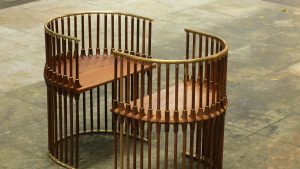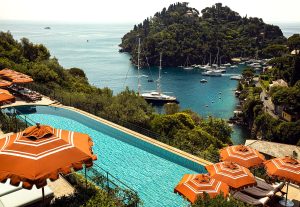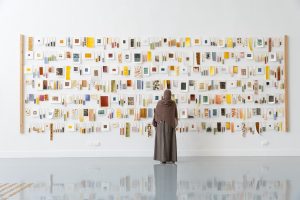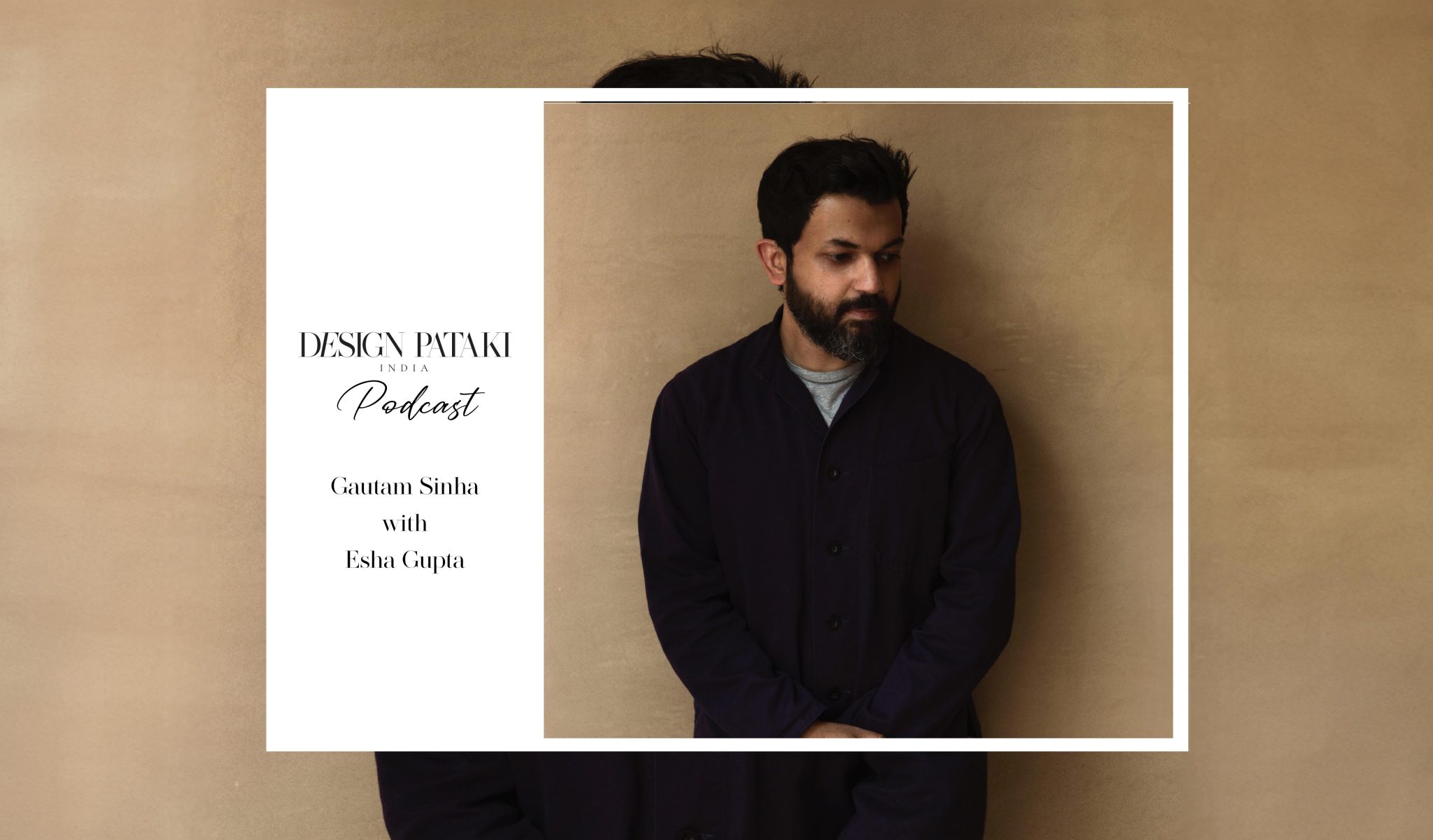In A Historic Sale, M.F. Husain’s 1954 Work Sets ₹100 Crore Record For Indian Art
M.F. Hussain’s masterpiece Untitled (Gram Yatra), a 14-foot-long painting, fetches $13.75 million at the Christie's auction, making it the most expensive publicly auctioned modern Indian artwork.
- 7 Apr '25
- 4:47 pm by Simran Almeida
There’s something undeniably mystical about the forgotten and hidden—a compelling pull toward the ‘unknown.’ So, when an M.F. Hussain painting surfaced seven decades later, it shattered records, redefining the South Asian art market while becoming the first Indian artwork to cross the ₹ 100-crore threshold. Monikered ‘Untitled (Gram Yatra), ’ this painting etched history at the Christie’s auction held at the iconic Rockefeller Center in New York on March 19, 2025, fetching a staggering $13.75 million. “We are thrilled to have been a part of setting a new benchmark value for the work of Maqbool Fida Husain and the entire category,” reveals Nishad Avari, the Head of Christie’s South Asian Modern + Contemporary Art. In addition to the Husain masterpiece, the auction saw bidding on works by prominent Indian artists, including Sayed Haider Raza, Gulam Rasool Santosh, Sudhir Patwardhan, Jeram Patel (work on paper), Ivan Peries, Senaka Senanayake, and BPrabha.
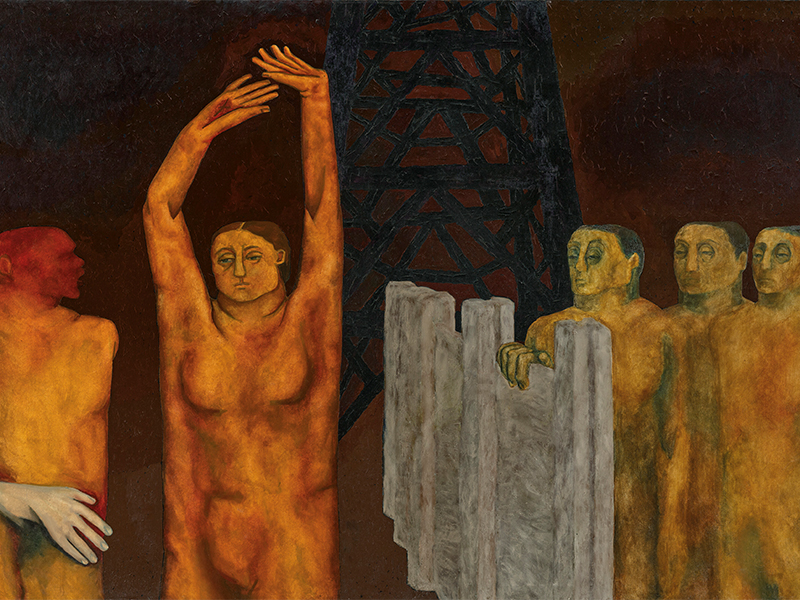
A Record-Breaking Auction

While this landmark sale defied expectations, eclipsing the house’s estimate of $2.5 million- $3.5 million, it quadrupled the records for any Modern Indian work, making it the highest-selling Modern artwork to date. Previously, this record was held by Amrita Sher-Gil’s oil-on-canvas masterpiece, ‘The Story Teller’ (1937), which was auctioned in Mumbai in September 2023 for $7.4 million. This sale cements Husain’s position in the pantheon of great modernists but also shatters his record of $3.1 million for ‘Untitled (Reincarnation)’ set in London last year. “This is a landmark moment and continues the extraordinary upward trajectory of the Modern and Contemporary South Asian Art market,” Avari reflects.
Also Read: On Paper: Indian Artists Who Transcend The Medium
Beyond Realism And The Revivalists

During the Independence movement, as young painters navigated the evolving currents of modern art—beyond revivalist nationalism and colonial academic realism—a new artistic language was quietly brewing on the canvases. This ‘modern artistic idiom’ was pioneered by Husain and his peers in the Progressive Artists’ Group, forging a distinctly Indian modern art movement. Encounters with Picasso, Matisse, Klee, and Modigliani introduced Cubist-inspired portraits and whimsical motifs, which became integral to this evolving visual lexicon. The resulting style was a symphony of bold strokes, abstraction, and native traditions paired with global influences like Cubism and Expressionism. Once this radical movement took root, Husain created some of his most illustrious masterpieces through the 1950s, including the iconic ‘Zameen’ (1954-55), enshrined in the National Gallery of Modern Art in New Delhi.
Amidst these magnum opuses is a 14-foot-long painting from 1954, capturing Hussain’s deep penchant for India—its bucolic landscapes, spirited characters paired with an interplay of European and East Asian influences. Comprising 13 vivid montages—bullock carts rattling, women at work, a dancer lost in music—this artwork underscores the centrality of the rural Indian village, drawing inspiration from the tradition of Indian miniature painting. Other elements he drew from his travels to China in 1952, where he encountered Xu Beihong and Qi Baishi, their expressive brushwork, and his visit to Europe a year later, further shaped his style. This painting left India in 1954—the year it was completed—and has remained largely unseen since its acquisition by Ukrainian-born, Norway-based doctor Leon Elias Volodarsky. However, its journey remained veiled in obscurity until its recent reemergence on the global stage.
Also Read: Sculptural Bars & Fluid Forms: Inside Bengaluru’s 5 Stunning New Restaurants
Tracing the Journey Of The Painting’s Homecoming
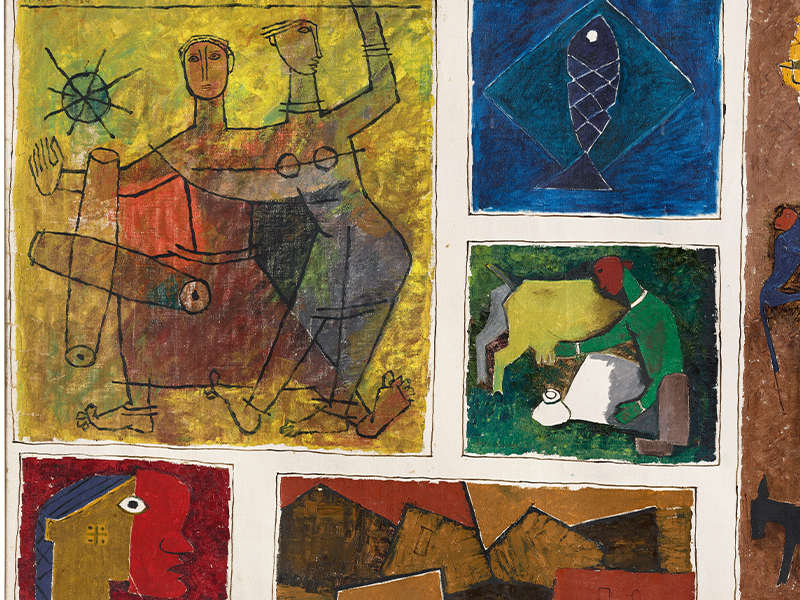
Avari first learned of the revered painting’s existence thirteen years ago, setting into motion a determined pursuit to reclaim this lost masterpiece. The journey to the auction block required navigating a labyrinth of permissions from the Oslo University Hospital’s board, which was finally prepared to part with the work after years of deliberation. The proceeds of the sale, however, will go toward launching a training center for doctors in Dr. Volodarsky’s name—a tribute to the man who once sheltered the masterpiece. Meanwhile, as Christie’s remains tight-lipped, speculation swirls around the painting’s new owner. In a full circle moment, reports widely suggest that Kiran Nadar, the renowned Indian art collector and philanthropist, has acquired the masterpiece, marking its homecoming after seven decades.
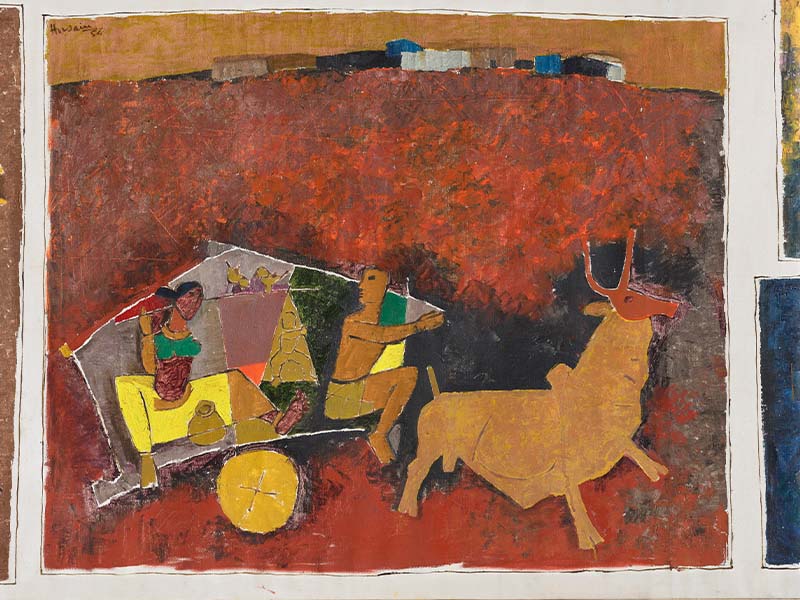
Art is an ever-evolving, ever-present and ever-shifting eternal force. Yet, some maestros, however, paint the very foundation upon which movements are built, paving the way for masterpieces like Untitled (Gram Yatra) to be reabsorbed into the grand narrative of Indian modernism. With the Indian art market’s continued ascent—valued at over $144 million in FY23—this sale marks a turning point. It stands as a testament to the timeless resonance and reverence of artistic genius and the relentless pull of cultural heritage. No matter how far one strays, art always finds its way home.





